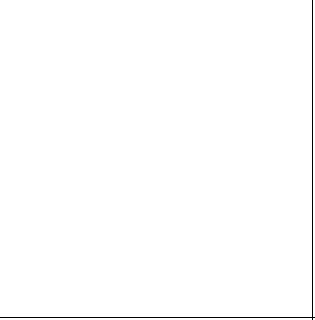All about Patterns
Hey it's Ashley and I'm the scribe for today and yes I know i didn't do it right away but for those who missed you should have really been there. It was a pretty interesting class because the class was all about PATTERNS and mr.k telling us about how God built the universe and blowing our minds (not literally of course...)
To start off Mr.k posted up the questions that he previously posted the day before on the board.
Expand and Simplify
(a+b)^0
(a+b)^1
(a+b)^2
(a+b)^3
(a+b)^4
To answer this question it's simple just expand and simplify
(a+b)^0 = 1 (because its exponent is 0)
(a+b)^1 = a+b (because its exponent is 1)
(a+b)^2 = (a+b)(a+b) => a^2 + 2ab + b^2
now be smart about the next question
instead of doing this (a+b)(a+b)(a+b) just multiply a^2 + 2ab + b^2 by (a+b) since it will be easier since a^2 + 2ab + b^2 is the same as (a+b)(a+b) and you are just multiplying one more (a+b) since its to the power of 3.
(a+b)^3 = a^2 + 2ab + b^2 * (a+b)
now distribute the a
= a^3 + 2a^2b + ab^2
then distribute the b
= a^3 + 2a^2b + ab^2 + a^2b + 2ab^2 + b^3
then gather the like terms
= a^3 + 2a^2b + ab^2 + a^2b + 2ab^2 + b^3
= a^3 + 3a^2b + 3ab^2 + b^3
Now do the same for (a+b)^4. Distribute and gather the like terms.
*Do not foil because foiling only works with binomials*
(a+b)^4 = (a^3 + 3a^2b + 3ab^2 + b^3) * (a+b)
Distribute a
= a^4 + 3a^3b + 3a^2b^2 + ab^3
Then Distribute b
= a^4 + 3a^3b + 3a^2b^2 + ab^3 +a^3b + 3a^2b^2 + 3ab^3 + b^4
Gather the like terms
= a^4 + 3a^3b + 3a^2b^2 + ab^3 +a^3b + 3a^2b^2 + 3ab^3 + b^4
= a^4 + 4a^3b + 6a^2b^2 + 4ab^3 + b^4
The other question posted on the board
Look for a pattern
1 1
1 2 1
1 3 3 1
Adding the numbers like this (sorry it's hard for me to explain so a diagram will hopefully help):
The Second Pattern:
The numbers in the triangle are the coefficients to the expand and simplify question.

The Third Pattern:
The exponents on the variable are: a descending and b ascending.
example:

The last question posted on the board:
Now if you did this on your calculator you would get
OCO = 1
1 = 1CO 1C1 = 1
1 = 2CO 2C1 = 2 2C2 = 1
1 = 3CO 3C1 = 3 3C2 = 3 3C3 = 1
1 = 4CO 4C1 = 4 4C2 = 6 4C3 = 4 4C4 = 4
In other words.....
1
1 1
1 2 1
1 3 3 1
1 4 6 4 1
It's the same as the second question. Neat huh?!

Then just when I thought there couldn't be more to talk about Mr. K handed us a worksheet which I'll post tomorrow. But it basically showed Pascal's Triangle which is this and I forgot what Mr.k said about pascal so ask him if you want to know who he is.

Now at the bottom of the worksheet it asked if you can find powers of 2, powers of 11 etc....
To find the powers of 2 in the triangle you just add the numbers in each row.




Next was on the talk about the Fibonacci numbers 1, 1, 2, 3, 5, 8,....
1+ 0 = 1, 1+1 = 2, 1+2 = 3, 2+3 = 5, 3+5 = 8
What else was mentioned in class? Ah yes flowers also respect the fibonacci sequence. You won't find a flower with 6 petals but you will find a flower petal with 5 petals but you won't find a flower petal with 7 petals but you will find a flower with 8 petals, so that's why it's rare to find a four leaf clover.
And Lastly Mr.K mentioned a number which i forgot what the number is called but it has to do with something about dividing your body into parts and it always equals to that number. Sorry but i forgot what he said but it sounded cool. However I'm still not sure as to what part of the lesson was on God building the universe? Oh well....
The next scribe will be.........LISA!!!
and sorry about the picture not showing. i wonder why that is?



bravo!! bravo!!
ReplyDeletewhat a wonderful work!
surely your scribe,
is hall of fame worth..
Good Job Ashley!! You put so much effort into your scribe post, its definitely hall of fame worthy!! good luck!!
ReplyDeleteHi Ashley,
ReplyDeleteI agree! Kudos for a Hall of Fame worthy scribe. The color coding to illustrate the patterning is noteworthy.
Sorry, I can't help you with the quirky images ---
best,
Lani
Hey!! sorry I just left my comment now but wow! your scribe is very detailed and very understandable. I also think it is HALL OF FAME STYLES
ReplyDelete